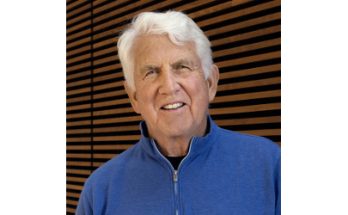“How YouTube Created the Attention Economy”
The New Yorker, October 4, 2022
Under Review
By Kevin Lozano
“‘Like, Comment, Subscribe,’ a new history of the platform by Mark Bergen, makes the case that YouTube cracked the code for turning the desire to watch and be watched into money.”
YouTube has consumed a good part of my days for more than a decade. As a teen-ager, I used the video-streaming platform to scrounge for crumbs of knowledge, watching free lectures on everything from algebra to literary modernism. Now I navigate to the YouTube app on my television most mornings to watch the news. I stream workout videos. I listen to music. I watch celebrities give tours of their garishly decorated mansions. Sometimes I stay on the site for hours, lost in the maze of memes, dinner ideas, and all manner of distraction.
My YouTube habit is far from unique. According to the company, the site has more than two billion monthly “logged-in” users. In a given twenty-four-hour period, more than a billion hours of video are streamed, and every minute around five hundred hours of video are uploaded. The torrent of content added to the site has helped establish new forms of entertainment (unboxing videos) and revolutionized existing ones (the mukbang). YouTube is a social network, but it is more than that; it is a library, a music-streaming platform, and a babysitting service. The site hosts the world’s largest collection of instructional videos. If you want to fix a tractor or snake a drain or perfectly dice an onion, you can learn how to do these things on YouTube. Of course, these are not the only things you can learn. Anti-vaxxers, 9/11 truthers, live-streamed acts of mass violence—all of these have surfaced on YouTube, too.
“No company has done more to create the online attention economy we’re all living in today,” Mark Bergen writes at the start of “Like, Comment, Subscribe,” his detailed history of YouTube, from 2005, the year it was founded, to the present. Among the titans of social media, YouTube is sometimes overlooked. It has not attracted as much adulation, censure, theorizing, or scrutiny as its rivals Facebook and Twitter. Its founders are not public figures on the order of Mark Zuckerberg or Jack Dorsey. Aaron Sorkin hasn’t scripted a movie about YouTube. But Bergen argues that YouTube “set the stage for modern social media, making decisions throughout its history that shaped how attention, money, ideology, and everything else worked online.” It’s one thing to attract attention on the Internet; it’s another thing to turn attention into money, and this is where YouTube has excelled. The site, Bergen writes, was “paying people to make videos when Facebook was still a site for dorm-room flirting, when Twitter was a techie fad, and a decade before TikTok existed.” Posting on Facebook or Twitter might net you social capital, an audience, or even a branded-content deal, but the benefits of uploading videos to YouTube are more tangible: its users can get a cut of the company’s revenue.
The site has been compensating “creators” since 2007, a scant two years after it launched, and only a year after Google acquired the company for a price tag of $1.65 billion. YouTube splits its advertising revenue fifty-five per cent to forty-five per cent, in favor of creators—one of the best deals available to anyone hoping to be paid for their time on the Internet. Since 2018, the main prerequisites a creator has needed to monetize their videos is a minimum of a thousand subscribers and four thousand “watch hours” in the previous twelve months. Recipe developers, video-game live-streamers, podcasters, teen-age trolls, children playing with toys, aspiring entrepreneurs hawking get-rich-quick schemes, right-wing shock jocks (at least those who haven’t been demonetized), and major television networks are all members of the baronial class of YouTube moneymakers. In a recent interview, the veteran science-and-education vlogger Hank Green said that the site presented such favorable terms that the idea he would “walk away” from YouTube would be like leaving America: “There are things I very much do not like about it, but I feel a little like a citizen, so that would be such a big decision to make.”
Bergen, a reporter for Bloomberg News and Businessweek, catalogues YouTube’s rise and the billions (of users, dollars, hours of video) it controls in a tone that is at once resigned, rhapsodic, and disgusted. The story his book unspools is one of breathtaking profit and foolish stumbles, violence and greed and corporate obfuscation. It is also one of surprising stability: YouTube, Bergen writes, is “the sleeping giant of social media.” Even as TikTok has become a megalith and other social networks have lost their touch with the youth, the site has retained its audience. A recent Pew Poll found that YouTube is used by ninety-five per cent of American teen-agers aged thirteen to seventeen, compared to sixty-seven per cent who used TikTok. As one of its employees told Bergen, “How do you boycott electricity?”
About the Author:
Kevin Lozano is a writer and editor. His work has appeared in The Nation, The New Republic, Artforum, Dissent, and elsewhere.
See also:
- “Like, Comment, Subscribe: Inside YouTube’s Chaotic Rise to World Domination Hardcover” by Mark Bergen. Published September 6, 2022 by Viking.






